I had a number of great fishing trips planned for 2022. I’d already completed my first visit to the Miramichi River, to fish for Striped Bass, and I was ready to get into some serious Walleye action.
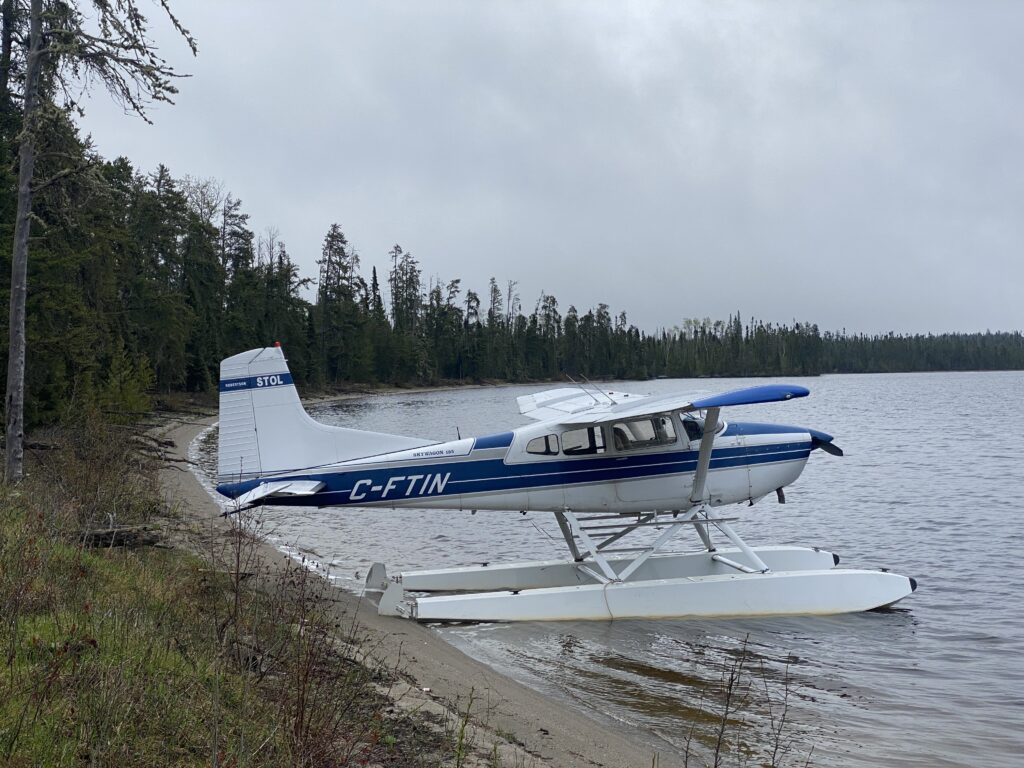
Our journey started out with a first for us, having to make an unplanned landing partway to the camp due to fog. When we took off, things looked great, but as we got close to the lake, the fog rolled in and the pilot made the smart choice to put down on a remote lake until the wind blew it off. We explored a cabin on the lake (it is used as an outpost as well), and were soon joined by another bush plane that put down for the same reason. 90 minutes later, we were up in the air, and on our way. We had been warned that the water levels were very high, but when we got to the camp, we were still shocked.
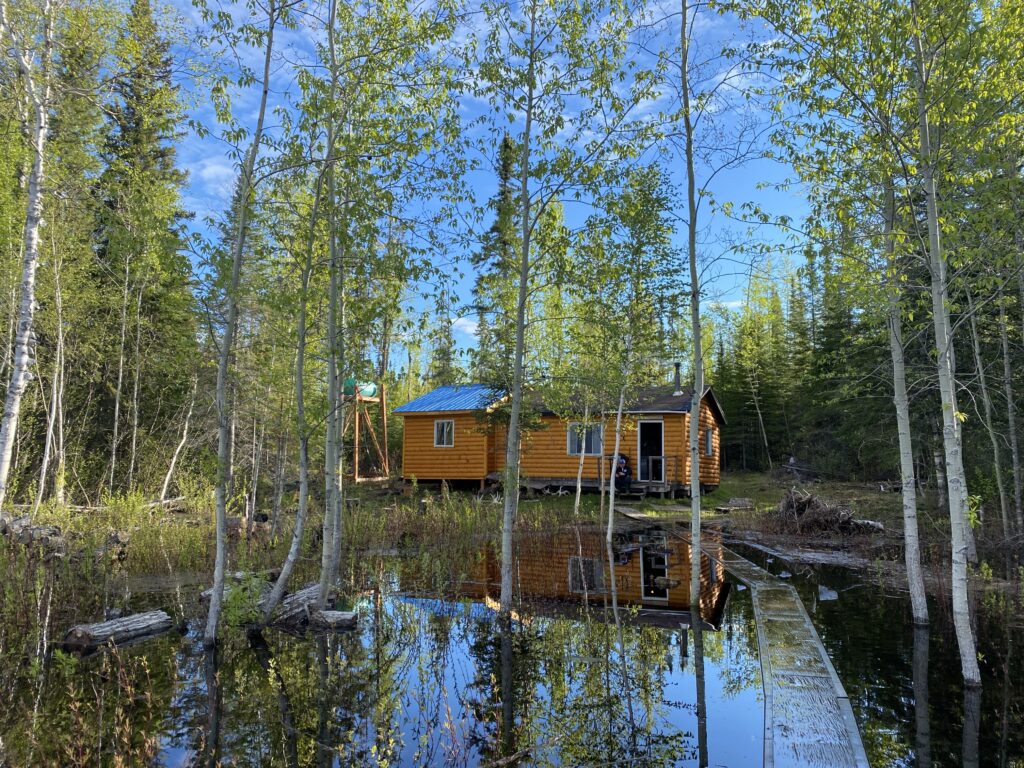
The high water meant our unloading was a bit of a slog, but after many treacherous walks on the floating boardwalk, we had most of our gear in the cabin. We had flown in on a very small Cesna 185, and the rest of our gear was to arrive with a fuel drop later that day. We did have our fishing supplies, as well as the ability to have a cup of coffee and some oatmeal as we rigged up.
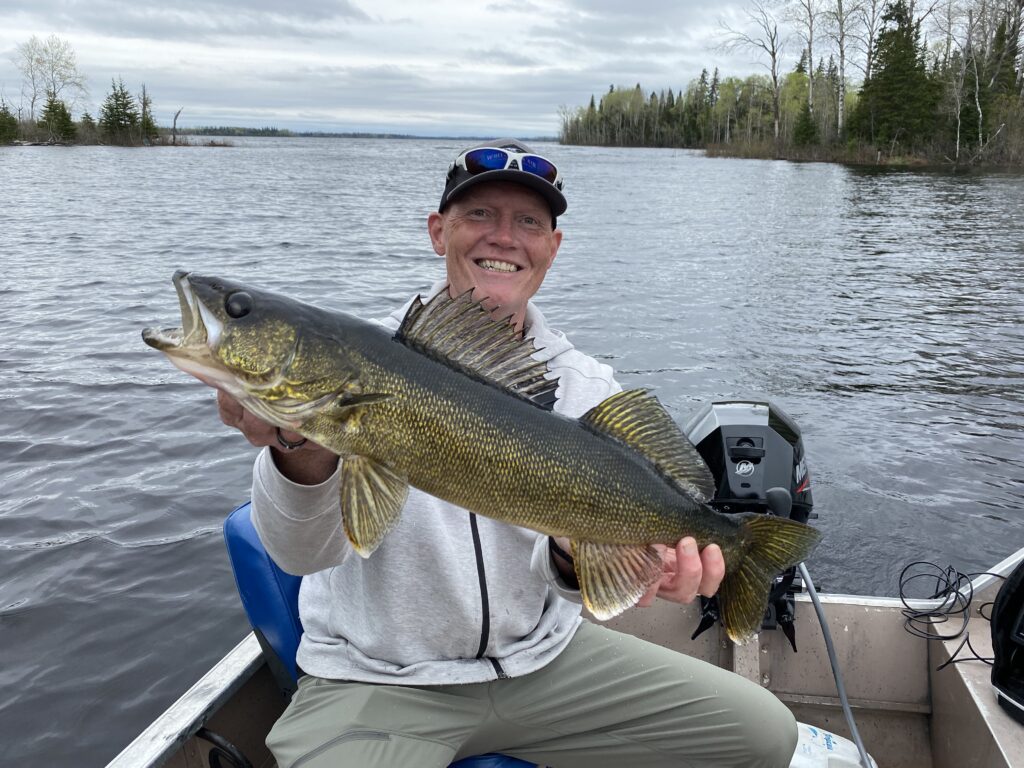
I confess that I’m doing this write-up a year late. Having fished this lake the year before (you can read it HERE), I’ll move off the day-to-day report, and give you the high level summary. It comes down to three main things: Big Water, Big Wind, Big Walleye.

The water level was high, extraordinary high, and it continued to rise as the week progressed. By the time we left after a week, even the six inch strip of sand was underwater, and we actually had a beaver swimming in front of the cabin where I would have been cutting wood the year before. While it made for a wet camp location, and a bit of pain to load in and out of boats, it meant that there was really nothing preventing you from fishing those hard to reach places.

The Hebner river flows into Little Makok, and while on our previous trip we could only get up part way, this year we were able to go as far as we wanted, stopped only by rapids and blow downs. Several more great Walleye holes were now available, and we were rewarded each and every time. There were many such areas were we could now safely get a boat through, which expanded our options.
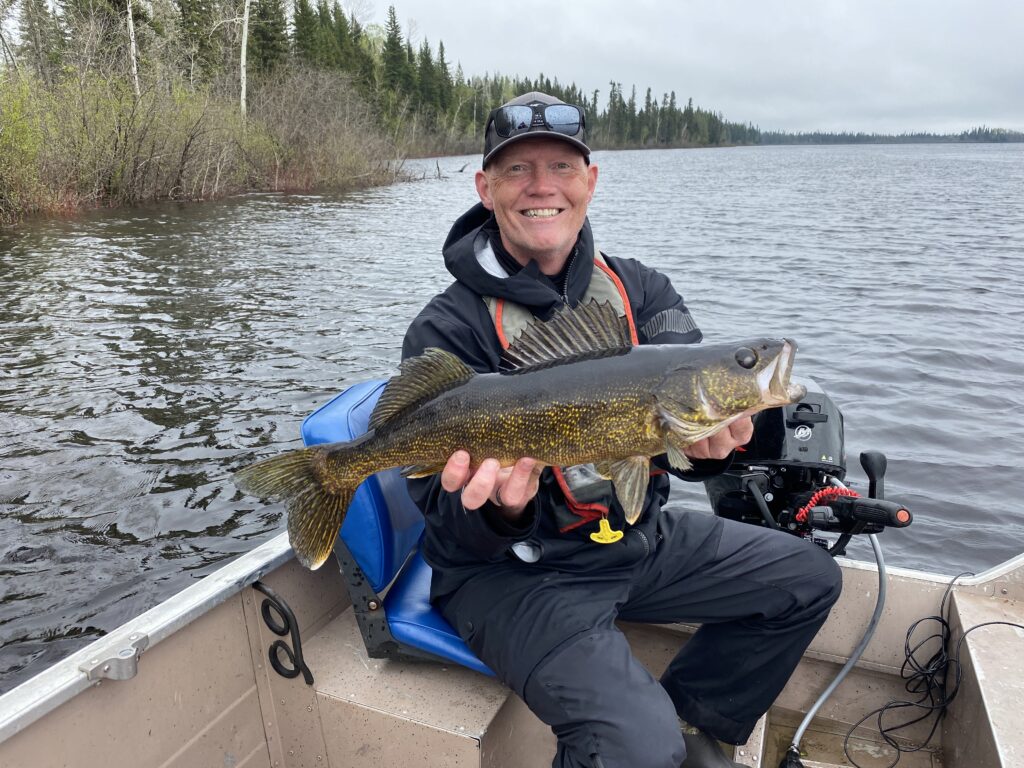
While the high water was our friend in many ways, it also meant that the already fast spring current was particularly torrid. Some of our current fishing became a touch more challenging on both boat control, and getting our bait into the strike zone before the current ripped it away. Like most trips, over the course of the week you make those small adjustments that lead to better results.
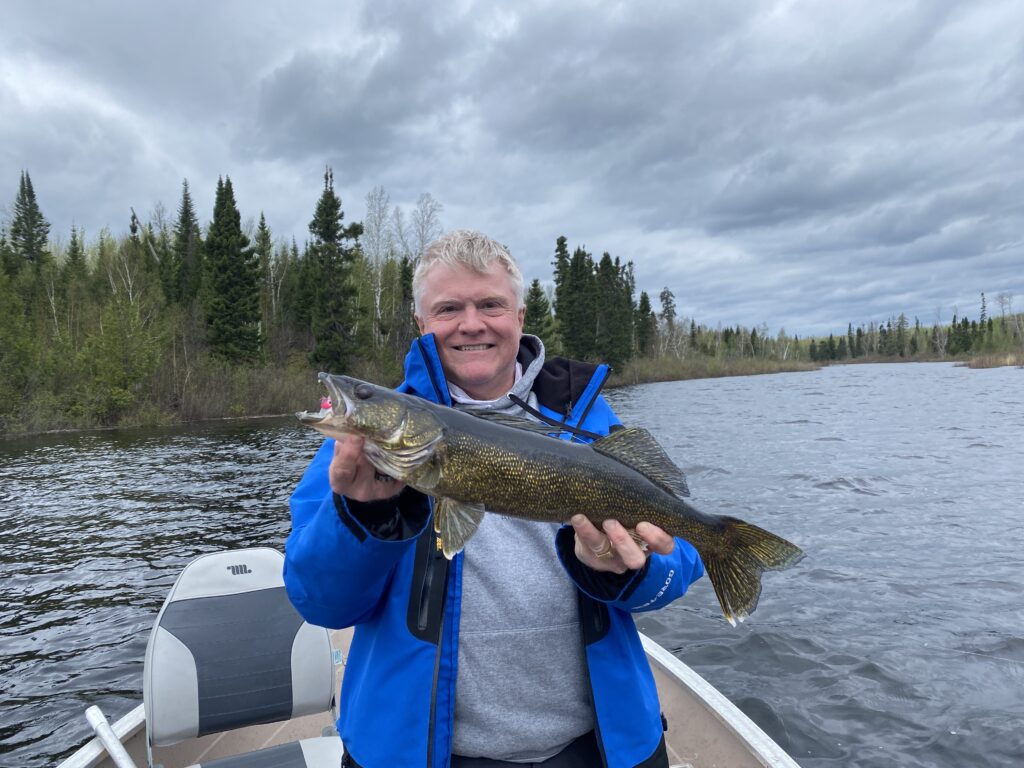
The wind was also a major factor. The mail lake (a widening of the Albany river) is big, really big. This means that if the wind comes up, and gets some time to build, that section of the water body can become to unsafe to fish. Normally Little Makok is a safe haven, but even this year we were driven off the water twice. One time it was near the end of the day, our our sat device had warned us of thunder storms coming in. We could see them in the distance and were able to get off before they hit us (and they hit us hard). Another time there were tornado warnings for our area! Even without the warnings, we could barley get the boat tied up with both of us using full effort.
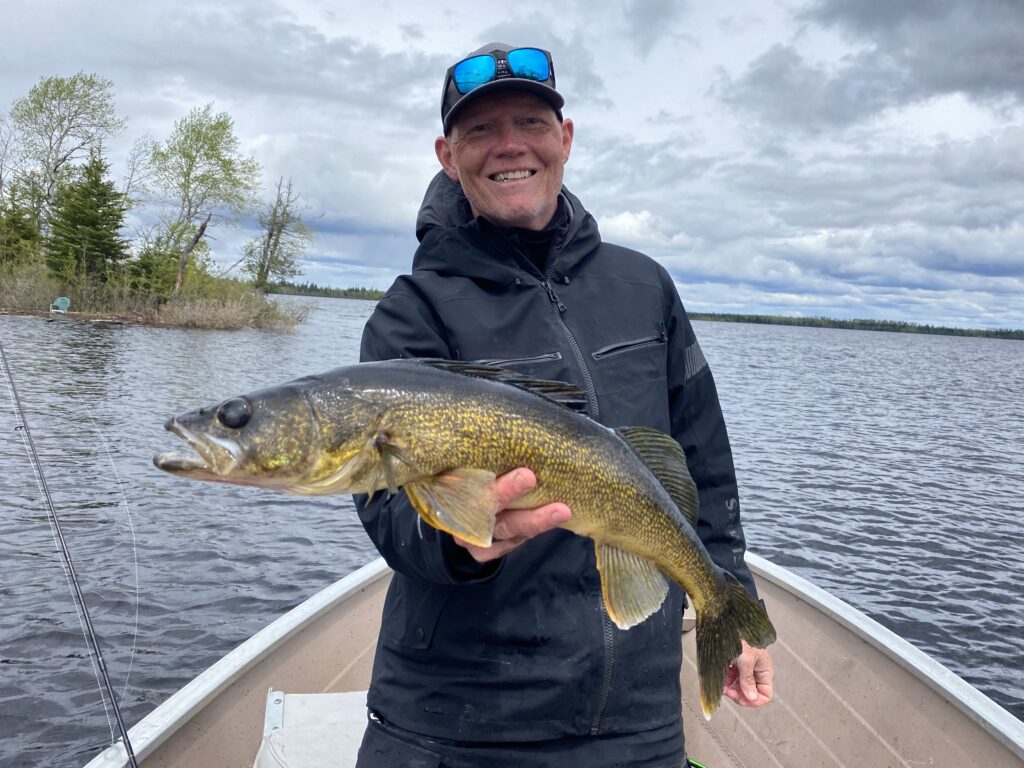
On average the wind was much more aggressive than the year before, but with access to the Hebner River, we could tuck out of the worst of it, and still crush huge Walleye, not a bad plan B. On the days where we wanted to make the longer runs to the main Albany inflow, we had to study the weather and wind forecasts, and often be on the water pretty early to capitalize on the better conditions.
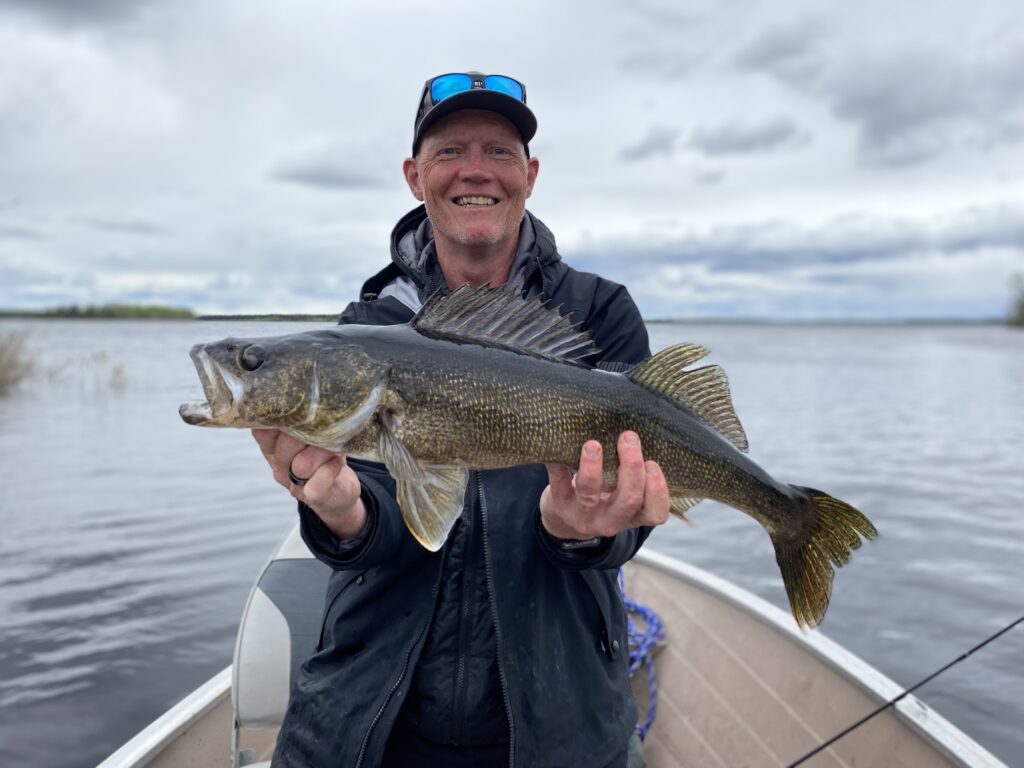
Big water and big wind can be challenging to fish, and for some those prospects will keep them from booking this kind of trip, but if you are experienced and comfortable, you can be rewarded. This trip produced the highest number of big Walleye for either of us. Any picture shown here, the fish is at least 24 inches long, which we consider to be a big fish. We both landed 28 inch Walleye, a new PB for each of us (but still shy of our 30in goal), and the number of fish that were 22/23in that we hand landed and released was too high to count.
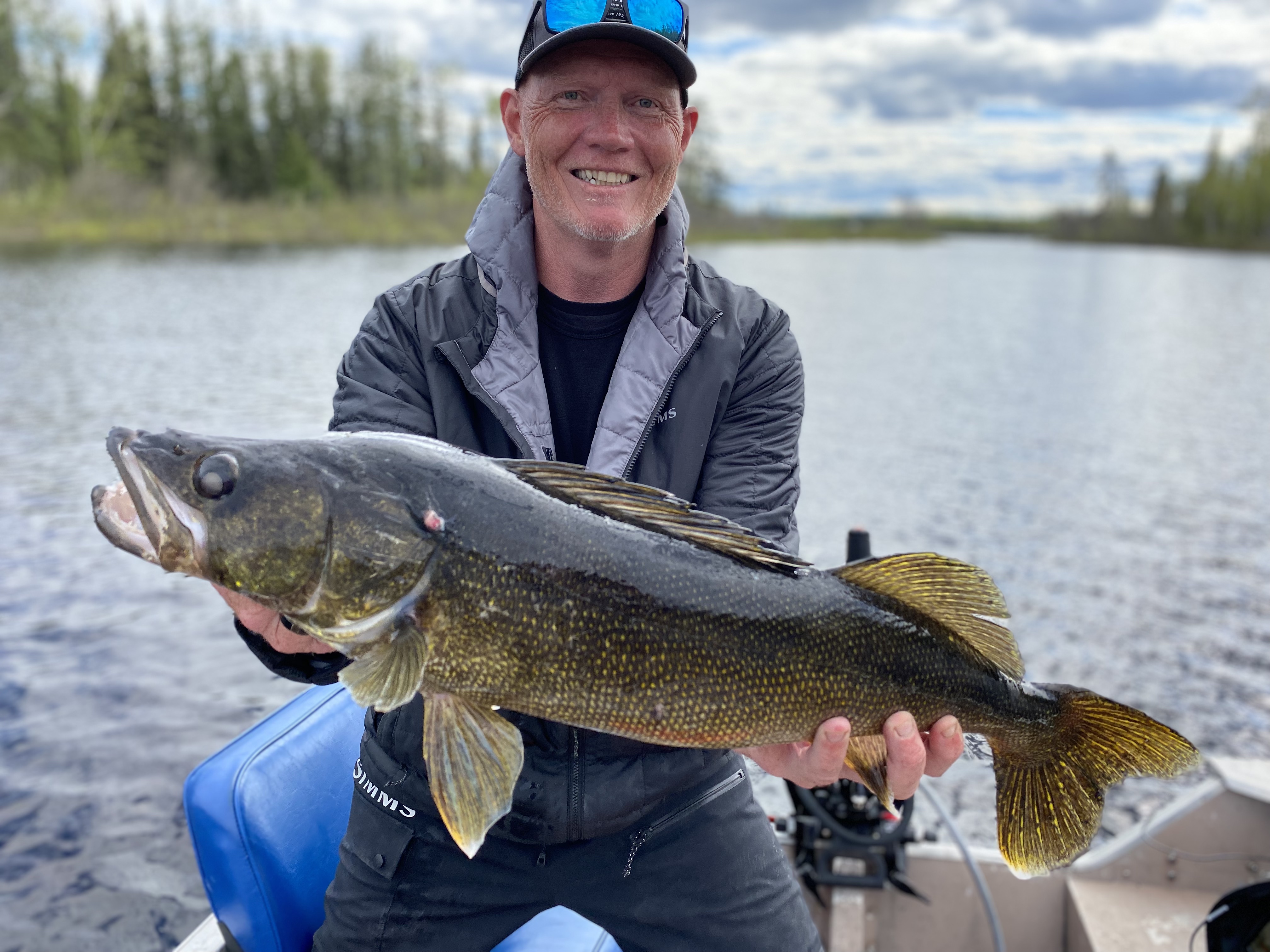
We primarily used our own jigs again. 1/4 oz with some form of a plastic body, no live bait. We could slow troll them, cast them, go vertical, pitch them, we had lots of options that all produced results. In the heavy current we’d upsize to a 3/8, but other than that, we only changed up the size / colour / body of the plastic to shake things up.
Along with the higher than average number of large Walleye, we did catch more Pike than our previous trip. I’ve often found that the higher water in the spring, or a colder than normal spring, means you’ll contact more incidental Northerns. This is anecdotal, I’m not sure there is any science to it.
If you are comfortable with an outpost camp, one that is a touch more rustic than others (but still very well-equipped), and are in search of some big Walleye, do yourself a favour and put Makokibatan Lake with Brace Lake Outfitters on your list. Any questions, reach out at scott@canadianfisherman.ca. I’m happy to chat.
